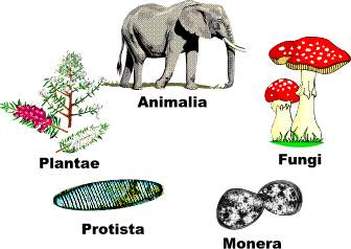The way in which we will classify is by using dichotomous keys. These leave us with 2 choices. If structured well, it can be a simple yes/no choice. A flow chart arrangement can be seen below.

Another option is where the choices are arranged in a table. This example is shown below.

The advantages of keys are:
- Allows for consistency when classifying
- Can be used by a non expert
The disadvantages of keys are:
- If not well written can cause confusion
- If an organism is new to science, it may be difficult to assign or mistakenly classified
The father of classification is Linneaus. He named organisms using a binomial system, giving the genus name first, then the species name. In the name, there should be some indication of the characterisics. For example the name Panthera leo (for the lion) indicated "big cat, lion).

As time went on, and the number of plants and animals described increased, it became obvious that the system of 2 names was not going to be sufficient. The invention of the microscope also meant that the microscopic world was now open. Eventually the groups of organisms were organised into 5 kingdoms according to their key features at the cell level.

However, the advance of technology and the uncovering of the Archaea has led to major revision of the classification system. Rather than having 5 kingdoms, its now proposed that 3 domains be placed at the top classification level. 4 of the 5 kingdoms are swept into one domain and the remaining one is divided into 2.

No comments:
Post a Comment